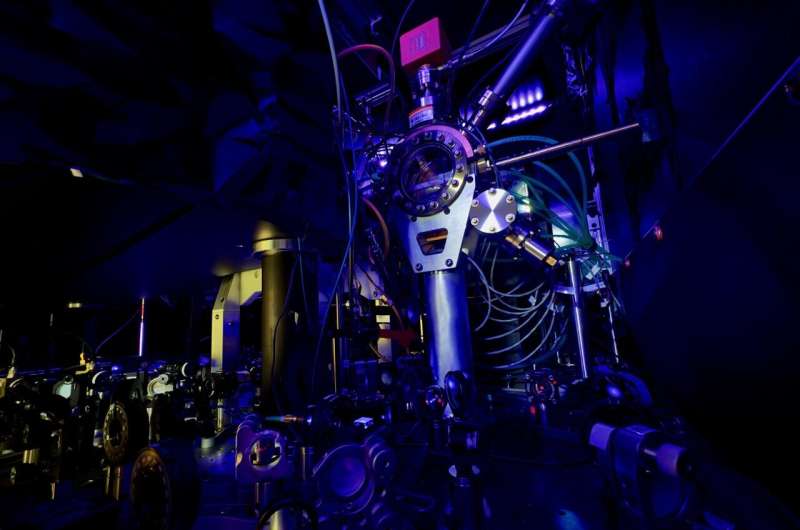An illustration displaying the complex setup needed to develop the most accurate clock. Credit: Kyungtae Kim at JILA
Scientists at the Ye Lab at JILA and University of Delaware have successfully crafted an optical lattice clock using trapped strontium atoms. Their groundbreaking clock, detailed in a Physical Review Letters publication, boasts a remarkable total systematic uncertainty of 8.1 x 10-19, marking a new milestone in precision timekeeping.
“This research stems from years of dedicated work at the Ye lab to create top-tier clocks,” shared Alexander Aeppli, a co-author of the study. “Time measurement is a crucial aspect of physics, and advancements in precision open up avenues for exploring new phenomena and technologies.”
Traditional timekeeping devices focus on measuring electron oscillations in cesium atoms, known as “microwave atomic clocks” due to their microwave frequency range. In contrast, modern atomic clocks, like the one developed by Aeppli’s team, utilize optical transitions with frequencies akin to visible light, enabling finer time subdivisions for enhanced accuracy.
The recent endeavors at the Ye Lab at JILA have concentrated on refining atomic clocks for superior time measurement. Aeppli’s latest research builds upon previous advancements in optical lattice clocks using strontium atoms, showcasing the potential for unparalleled precision.
“A clock typically comprises an oscillator, a counter, and a reference,” explained Aeppli. “In a classic pendulum clock, the pendulum serves as the oscillator, while gears track its swings to indicate time. The reference point is the sun’s position, with noon marking the sun’s highest point in the sky.”
2024-07-24 07:15:03
Article sourced from phys.org
